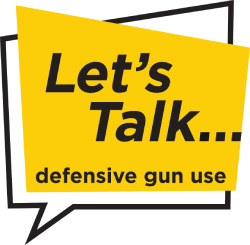I’m not sure where or when walking backward while shooting started, but I’d love to know what tactical advantage walking backward while engaging a threat provides.
Some people call this “moving” backward, but moving can suggest turning and “extracting,” which is something else we teach in our “Street Extraction” course.
To create space? Yeah, ok, but you can do that by stepping left or right, right?
To create distance? Only if the threat is standing still, and we should all know by now that threats do NOT stand still, because if we’re saying that threats DO stand still (and not closing the distance on you), then why are we walking backward in the first place?
These are all questions I pose to students in most of our Street Scene System of Training (SSST) courses.
If something doesn’t make sense, why do it? If something isn’t giving you a tactical advantage, why do it?
4 categories of movement while shooting
Before I get into the weeds of this, I want to confirm the four ways that one-on-one engagements occur:
- Static Defender vs. Static Threat
- Static Defender vs. Moving Threat
- Moving Defender vs. Static Threat
- Moving Defender vs. Moving Threat
Out of those 4 categories, the vast majority of firearms users only train in Cat 1 and Cat 3 when they visit the range. My personal opinion on why that is because (a) it’s easy and (b) they wanna hit the threat (target).
However, in terms of street engagements, that’s not how these situations go down. The truth is that Cat 4 is the most likely and most probable situation that you will have to deal with when faced with an armed threat.
The “go-to” and trending drill seems to be walking backward while engaging a static threat, and I cannot, for the life of me, think why?
Let me paint a simple picture (helped by Figure 1 below):

In this case, the threat could be a threat standing in the street, or a seated threat, who has been pulled over in their vehicle by law enforcement.
The threat (either seated or standing) opens fire, and you, the Defender, return fire and start to walk “backward,” probably quite vigorously, yes?
The problem with walking backward while shooting
So, what are the problems with this?
- You’re still in the damn kill zone.
- You cannot see behind you as you walk backward in a street.
Don’t get me wrong, if you ever come under contact on a football field, the desert, or the moon, then yeah, you could probably walk backward for miles without tripping over anything or bumping into something or someone.
But you CAN’T do that in the street – you just can’t, so why are so many people still training this way? It has absolutely no tactical advantage for you, and it only serves the interests of the “static” threat.

Get Off The X
Would it not be better to step left or right to escape the kill zone (off the X)? Much in the same way, you should get AWAY from your vehicle if you’re getting brassed up, but “away” doesn’t mean backward, in a straight line, because you’re still in the kill zone. It means out to the left or right. (Every infantryman knows this).
For those who haven’t heard the term “brassed up” before, it simply means to be under direct and sustained fire, more regularly used when in a vehicle or behind a piece of cover – it’s like God’s way of telling you to move.

Why move laterally while shooting
The advantages of stepping left or right are:
- You immediately get out of the Kill Zone. That’s gotta be a good thing, right?
- You have still managed to create space but have created “tactical” rather than “distanced” space. We often refer to this as a reactionary gap.
- Being closer to a “static” threat isn’t necessarily a bad thing if we consider that the further back you walk, the greater distance you will be firing at. For example, you might miss and hit someone other than the threat.
- You won’t trip over something, fall over, or bump into something/someone because you’re not blindly walking backward; instead, you are moving left or right.
Walking backward while engaging a static threat is an easy drill to set up on a range. Still, it doesn’t reflect the reality of how these things happen in the street; therefore, it is not a functional drill. It serves no tactical purpose because walking backward while engaging a static threat will probably cause you more problems than it will solve.
If you don’t believe me, try blindly walking backward from your fridge in your own kitchen and see what you trip over first: kid, dog, bag, mop bucket, grandma…
Now imagine doing the same on a busy street…doesn’t make sense now, does it?
By Neilly Davis
Neilly is the Training Director at Go Noisy USA LLC. Based in Florida.


